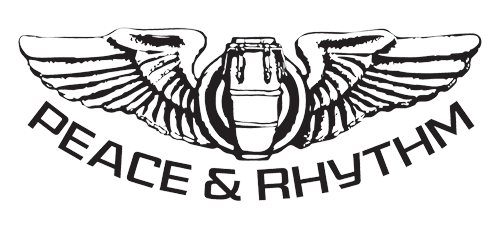News & Updates
Please note: this page is here for archival purposes only and is no longer being updated.
[
{
"id": "hasaan-ibn-ali-may-6-1931-1980",
"data": {
"title": "Hasaan Ibn Ali / May 6, 1931 - 1980",
"slug": "hasaan-ibn-ali-may-6-1931-1980",
"date": "2017-05-06T00:00:00.000Z"
},
"body": "\n\n\"**The Legendary** **Hasaan** \" Ibn Ali may be an obscure name in jazz but his notoriety in his local Philadelphia scene is not lost on the musicians of the time and place, not the least of which would be the Philly-reared saxophonists John Coltrane and Odean Pope, as well as fellow pianist McCoy Tyner. Max Roach, Clifford Brown, Henry Grimes, Miles Davis, JJ Johnson, Benny Golson have all played with him and Coltrane counted him as a big influence.\n\nTo those that have heard him, his quick and unconventional rhythmic style and sense of harmony put him in a category with the likes of Thelonious Monk and Herbie Nichols. Hasaan himself claimed Elmo Hope as an influence. A lifelong Philadelphian, Hasaan joined Joe Morris' R&B group as a teenager in the '40s before lending great influence on the local jazz cats. He took some gigs in NYC with Horace Arnold and others, including Roach. Roach said Hasaan would show up at his house in the middle of the night and start banging away on the piano.\n\nThere are stories of Hasaan showing up in clubs and if he didn't like the piano player in the group he would physically throw him off the stage and take over himself. The only album that exists of his work is a mid-'60s date for Atlantic with Roach and Art Davis (_The Max Roach Trio Featuring The Legendary Hasaan_). Roach pulled strings at the label to get the music of Hasaan out to the world. Further sessions had tapes lost to a fire. The Library of Congress also houses a solo piano recording from 1964. (There are rumors of a 1952 home recording with Coltrane. Trane undertook serious study with Hasaan and his \"sheets of sound\" period would reflect this.) Hasaan failed to watch out for his own health and died in 1980, obscure to most of the world outside of Philly.",
"filePath": "content/posts/hasaan-ibn-ali-may-6-1931-1980.md",
"digest": "b4497d62dd7dbc0a",
"rendered": {
"html": "<p><img src=\"/images/Hasaan_Ibn_Ali_large.jpg\" alt=\"\"></p>\n<p>“<strong>The Legendary</strong> <strong>Hasaan</strong> ” Ibn Ali may be an obscure name in jazz but his notoriety in his local Philadelphia scene is not lost on the musicians of the time and place, not the least of which would be the Philly-reared saxophonists John Coltrane and Odean Pope, as well as fellow pianist McCoy Tyner. Max Roach, Clifford Brown, Henry Grimes, Miles Davis, JJ Johnson, Benny Golson have all played with him and Coltrane counted him as a big influence.</p>\n<p>To those that have heard him, his quick and unconventional rhythmic style and sense of harmony put him in a category with the likes of Thelonious Monk and Herbie Nichols. Hasaan himself claimed Elmo Hope as an influence. A lifelong Philadelphian, Hasaan joined Joe Morris’ R&B group as a teenager in the ’40s before lending great influence on the local jazz cats. He took some gigs in NYC with Horace Arnold and others, including Roach. Roach said Hasaan would show up at his house in the middle of the night and start banging away on the piano.</p>\n<p>There are stories of Hasaan showing up in clubs and if he didn’t like the piano player in the group he would physically throw him off the stage and take over himself. The only album that exists of his work is a mid-’60s date for Atlantic with Roach and Art Davis (<em>The Max Roach Trio Featuring The Legendary Hasaan</em>). Roach pulled strings at the label to get the music of Hasaan out to the world. Further sessions had tapes lost to a fire. The Library of Congress also houses a solo piano recording from 1964. (There are rumors of a 1952 home recording with Coltrane. Trane undertook serious study with Hasaan and his “sheets of sound” period would reflect this.) Hasaan failed to watch out for his own health and died in 1980, obscure to most of the world outside of Philly.</p>",
"metadata": {
"headings": [],
"localImagePaths": [],
"remoteImagePaths": [],
"frontmatter": {
"web-scraper-order": "1746561636-278",
"web-scraper-start-url": "https://peaceandrhythm.com",
"title": "Hasaan Ibn Ali / May 6, 1931 - 1980",
"pagination": "https://www.peaceandrhythm.com/?page=57",
"date": "May 06, 2017",
"post": "Hasaan Ibn Ali / May 6, 1931 - 1980",
"post-href": "https://www.peaceandrhythm.com/blogs/news/hasaan-ibn-ali-may-6-1931-1980",
"slug": "hasaan-ibn-ali-may-6-1931-1980"
},
"imagePaths": []
}
},
"collection": "blog"
},
{
"id": "delia-derbyshire-may-5-1937-july-3-2001",
"data": {
"title": "Delia Derbyshire / May 5, 1937 - July 3, 2001",
"slug": "delia-derbyshire-may-5-1937-july-3-2001",
"date": "2017-05-05T00:00:00.000Z"
},
"body": "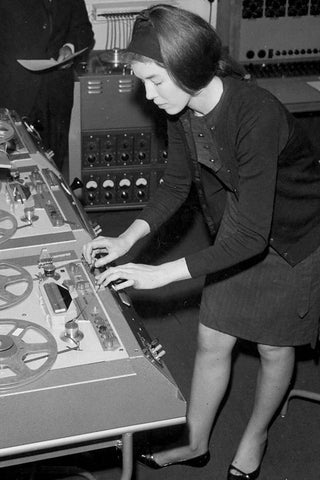\n\nThe English electronic music composer **Delia Derbyshire** may be best known for her eerie _Doctor Who_ theme song but she held a creative chair at the BBC Radiophonic Workshop for over ten years, contributing to hundreds of productions.\n\nFrom Coventry, she played piano and violin as a child and expressed interest in mathematics and sound. After flat rejections from record companies that refused to hire a woman for the studio (ahem, Decca), she found some work with Luciano Berio in '62, as well as joining the BBC that year. There she and her colleagues composed for various science & learning programs, horror movies, robot soundtracks, etc. Lots of visiting rock stars (Paul McCartney, Brian Jones and others) would pop in and she would show them how to realize their sound art pieces.\n\nShe liked to treat sound made off of \"found\" objects (it could be anything from lamps to bottles to strings), used feedback as music, worked with oscillators and gadgets and hand-spliced her tapes (as was the practice in those days before computers). She would speed the tapes up and down, changing the pitch as appropriate for the piece.\n\nThe _Doctor Who_ theme, although originally composed by Ron Grainer, was pretty much a Derbyshire creation. Grainer was quite impressed and campaigned (unsuccessfully) for her to receive a co-writing credit with the BBC. But she never did receive as much as a dime of royalties for her work on _Doctor Who_ , which had been released as a single and re-released on many compilations through the years. (She also contributed sounds to the action in specific episodes as well).\n\nAfter leaving the Beeb, she started working in a private studio with some fellow creative minds of Radiophonic as Unit Delta Plus. They made an important and pioneering electronic music album _An Electric Storm_ (credited to White Noise, released on Island in '69). She collaborated with theatre projects, filmmakers, poets, schools, fashion shows, photographers and other art happenings, adding sounds to the various works.\n\nShe was a major inspiration on folks from the Beatles and Pink Floyd (who have sampled her work in their music) to Stereolab, Yoko Ono (a collaborator of Delia's) and others. Late in her life she co-produced records by Sonic Boom's project Experimental Audio Research. She is now justly considered an important pioneer in sound art, audio collage, tape music, noise and electronic music.\n\n\"My most beautiful sound at the time was a tatty green BBC lampshade,\" she recalled. \"It was the wrong colour, but it had a beautiful ringing sound to it. I hit the lampshade, recorded that, faded it up into the ringing part without the percussive start.\n\n\"I analysed the sound into all of its partials and frequencies, and took the 12 strongest, and reconstructed the sound on the workshop's famous 12 oscillators to give a whooshing sound. So the camels rode off into the sunset with my voice in their hooves and a green lampshade on their backs.\"",
"filePath": "content/posts/delia-derbyshire-may-5-1937-july-3-2001.md",
"digest": "625058cae7343b77",
"rendered": {
"html": "<p><img src=\"/images/p01ltv11_large.jpg\" alt=\"\"></p>\n<p>The English electronic music composer <strong>Delia Derbyshire</strong> may be best known for her eerie <em>Doctor Who</em> theme song but she held a creative chair at the BBC Radiophonic Workshop for over ten years, contributing to hundreds of productions.</p>\n<p>From Coventry, she played piano and violin as a child and expressed interest in mathematics and sound. After flat rejections from record companies that refused to hire a woman for the studio (ahem, Decca), she found some work with Luciano Berio in ‘62, as well as joining the BBC that year. There she and her colleagues composed for various science & learning programs, horror movies, robot soundtracks, etc. Lots of visiting rock stars (Paul McCartney, Brian Jones and others) would pop in and she would show them how to realize their sound art pieces.</p>\n<p>She liked to treat sound made off of “found” objects (it could be anything from lamps to bottles to strings), used feedback as music, worked with oscillators and gadgets and hand-spliced her tapes (as was the practice in those days before computers). She would speed the tapes up and down, changing the pitch as appropriate for the piece.</p>\n<p>The <em>Doctor Who</em> theme, although originally composed by Ron Grainer, was pretty much a Derbyshire creation. Grainer was quite impressed and campaigned (unsuccessfully) for her to receive a co-writing credit with the BBC. But she never did receive as much as a dime of royalties for her work on <em>Doctor Who</em> , which had been released as a single and re-released on many compilations through the years. (She also contributed sounds to the action in specific episodes as well).</p>\n<p>After leaving the Beeb, she started working in a private studio with some fellow creative minds of Radiophonic as Unit Delta Plus. They made an important and pioneering electronic music album <em>An Electric Storm</em> (credited to White Noise, released on Island in ‘69). She collaborated with theatre projects, filmmakers, poets, schools, fashion shows, photographers and other art happenings, adding sounds to the various works.</p>\n<p>She was a major inspiration on folks from the Beatles and Pink Floyd (who have sampled her work in their music) to Stereolab, Yoko Ono (a collaborator of Delia’s) and others. Late in her life she co-produced records by Sonic Boom’s project Experimental Audio Research. She is now justly considered an important pioneer in sound art, audio collage, tape music, noise and electronic music.</p>\n<p>“My most beautiful sound at the time was a tatty green BBC lampshade,” she recalled. “It was the wrong colour, but it had a beautiful ringing sound to it. I hit the lampshade, recorded that, faded it up into the ringing part without the percussive start.</p>\n<p>“I analysed the sound into all of its partials and frequencies, and took the 12 strongest, and reconstructed the sound on the workshop’s famous 12 oscillators to give a whooshing sound. So the camels rode off into the sunset with my voice in their hooves and a green lampshade on their backs.”</p>",
"metadata": {
"headings": [],
"localImagePaths": [],
"remoteImagePaths": [],
"frontmatter": {
"web-scraper-order": "1746561634-277",
"web-scraper-start-url": "https://peaceandrhythm.com",
"title": "Delia Derbyshire / May 5, 1937 - July 3, 2001",
"pagination": "https://www.peaceandrhythm.com/?page=57",
"date": "May 05, 2017",
"post": "Delia Derbyshire / May 5, 1937 - July 3, 2001",
"post-href": "https://www.peaceandrhythm.com/blogs/news/delia-derbyshire-may-5-1937-july-3-2001",
"slug": "delia-derbyshire-may-5-1937-july-3-2001"
},
"imagePaths": []
}
},
"collection": "blog"
},
{
"id": "bruce-haack-may-4-1931-sept-26-1988",
"data": {
"title": "Bruce Haack / May 4, 1931 - Sept 26, 1988",
"slug": "bruce-haack-may-4-1931-sept-26-1988",
"date": "2017-05-04T00:00:00.000Z"
},
"body": "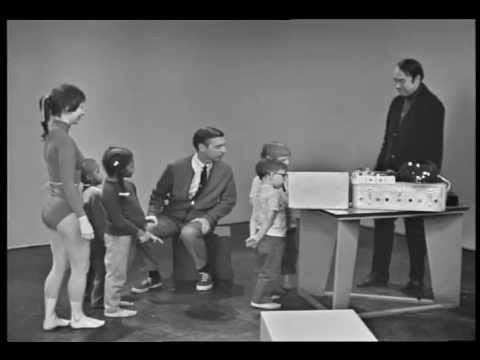\n\nThe Canadian electronic music pioneer and instrument-builder/inventor **Bruce Haack** has a birthday today. An inspired creative person, the man participated in a wide array of projects. Early on he played jazz & Ukrainian folk music, participated in authentic pow-wows, hosted a radio show and got into tape & electro-acoustic music in the '50s. He also worked as a pop songwriter for the Dot & Coral labels, as well as composed for dance & theater.\n\nHe built several musical toys including synths, samplers, a vocoder and music-playing robots that could perform in concert. He made several high-concept children's records, recorded electronic Xmas songs and utilized his imagination to contribute commercial jingles. He also composed a piece for solo piano that was performed at Carnegie Hall in '62.\n\nIn '63 he composed \"Garden of Delights\", a piece for Gregorian chants and electronic music which has never been released. His _Electric Lucifer_ (1970) was a psychedelic concept album about Heaven & Hell at war with each other. He appeared as a novelty act on several TV shows (such as _The Tonight Show_ & _Mr Rogers_) and toward the end of his life cut a hiphop record in '82 (\"Party Machine\") with young Russell Simmons. Is that enough crazy activity for ya?",
"filePath": "content/posts/bruce-haack-may-4-1931-sept-26-1988.md",
"digest": "5352a1daa193c6c0",
"rendered": {
"html": "<p><img src=\"/images/hqdefault_0b6b10d5-551b-4f57-9528-720b63546c19_large.jpg\" alt=\"\"></p>\n<p>The Canadian electronic music pioneer and instrument-builder/inventor <strong>Bruce Haack</strong> has a birthday today. An inspired creative person, the man participated in a wide array of projects. Early on he played jazz & Ukrainian folk music, participated in authentic pow-wows, hosted a radio show and got into tape & electro-acoustic music in the ’50s. He also worked as a pop songwriter for the Dot & Coral labels, as well as composed for dance & theater.</p>\n<p>He built several musical toys including synths, samplers, a vocoder and music-playing robots that could perform in concert. He made several high-concept children’s records, recorded electronic Xmas songs and utilized his imagination to contribute commercial jingles. He also composed a piece for solo piano that was performed at Carnegie Hall in ‘62.</p>\n<p>In ‘63 he composed “Garden of Delights”, a piece for Gregorian chants and electronic music which has never been released. His <em>Electric Lucifer</em> (1970) was a psychedelic concept album about Heaven & Hell at war with each other. He appeared as a novelty act on several TV shows (such as <em>The Tonight Show</em> & <em>Mr Rogers</em>) and toward the end of his life cut a hiphop record in ‘82 (“Party Machine”) with young Russell Simmons. Is that enough crazy activity for ya?</p>",
"metadata": {
"headings": [],
"localImagePaths": [],
"remoteImagePaths": [],
"frontmatter": {
"web-scraper-order": "1746561626-275",
"web-scraper-start-url": "https://peaceandrhythm.com",
"title": "Bruce Haack / May 4, 1931 - Sept 26, 1988",
"pagination": "https://www.peaceandrhythm.com/?page=57",
"date": "May 04, 2017",
"post": "Bruce Haack / May 4, 1931 - Sept 26, 1988",
"post-href": "https://www.peaceandrhythm.com/blogs/news/bruce-haack-may-4-1931-sept-26-1988",
"slug": "bruce-haack-may-4-1931-sept-26-1988"
},
"imagePaths": []
}
},
"collection": "blog"
},
{
"id": "guy-warren-aka-kofi-ghanaba-may-4-1923-dec-22-2008",
"data": {
"title": "Guy Warren aka Kofi Ghanaba / May 4, 1923 - Dec 22, 2008",
"slug": "guy-warren-aka-kofi-ghanaba-may-4-1923-dec-22-2008",
"date": "2017-05-04T00:00:00.000Z"
},
"body": "**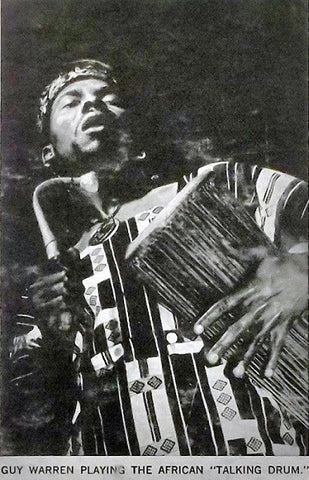**\n\n**Kofi Ghanaba** , aka Guy Warren, was the first musician from the African continent to become known with a career and recordings in the USA, fusing American jazz with African folk forms. He was also a teacher, writer, historian and pan-Africanist of renown.\n\nA Ghanaian by birth, during WW2 he worked for the US as a spy, after which he became a journalist and a jazz musician. In 1947 he was a founding member of the great African-jazz band The Tempos with ET Mensah. In '51 he became the first African to become a BBC radio producer and also did radio in Liberia in the mid '50s before moving to Chicago in '54.\n\nHis 1956 album _Africa Speaks, America Answers_ is an early example of African music production made in the USA. After releasing some albums and working with Max Roach, Duke Ellington, German bandleader Bert Kaempfert and participating in the _Soul To Soul_ concert he went back permanently to Ghana in the '70s, having been disillusioned by his experience in the States.\n\nHe was active against South African apartheid and in the '80s he helped form a musician's union in Ghana. He founded a newspaper in 1992 and held a wide library of African books and newspapers, which have since been donated to institutions preserving African culture. He has worked for stage and screen and his music continued to be played by American jazz musicians such as Art Blakey and, even now still, Randy Weston.",
"filePath": "content/posts/guy-warren-aka-kofi-ghanaba-may-4-1923-dec-22-2008.md",
"digest": "c21da37bfa667b27",
"rendered": {
"html": "<p><strong><img src=\"/images/A-344801-1389484846-3675_jpeg_large.jpg\" alt=\"\"></strong></p>\n<p><strong>Kofi Ghanaba</strong> , aka Guy Warren, was the first musician from the African continent to become known with a career and recordings in the USA, fusing American jazz with African folk forms. He was also a teacher, writer, historian and pan-Africanist of renown.</p>\n<p>A Ghanaian by birth, during WW2 he worked for the US as a spy, after which he became a journalist and a jazz musician. In 1947 he was a founding member of the great African-jazz band The Tempos with ET Mensah. In ‘51 he became the first African to become a BBC radio producer and also did radio in Liberia in the mid ’50s before moving to Chicago in ‘54.</p>\n<p>His 1956 album <em>Africa Speaks, America Answers</em> is an early example of African music production made in the USA. After releasing some albums and working with Max Roach, Duke Ellington, German bandleader Bert Kaempfert and participating in the <em>Soul To Soul</em> concert he went back permanently to Ghana in the ’70s, having been disillusioned by his experience in the States.</p>\n<p>He was active against South African apartheid and in the ’80s he helped form a musician’s union in Ghana. He founded a newspaper in 1992 and held a wide library of African books and newspapers, which have since been donated to institutions preserving African culture. He has worked for stage and screen and his music continued to be played by American jazz musicians such as Art Blakey and, even now still, Randy Weston.</p>",
"metadata": {
"headings": [],
"localImagePaths": [],
"remoteImagePaths": [],
"frontmatter": {
"web-scraper-order": "1746561624-274",
"web-scraper-start-url": "https://peaceandrhythm.com",
"title": "Guy Warren aka Kofi Ghanaba / May 4, 1923 - Dec 22, 2008",
"pagination": "https://www.peaceandrhythm.com/?page=57",
"date": "May 04, 2017",
"post": "Guy Warren aka Kofi Ghanaba / May 4, 1923 - Dec 22, 2008",
"post-href": "https://www.peaceandrhythm.com/blogs/news/guy-warren-aka-kofi-ghanaba-may-4-1923-dec-22-2008",
"slug": "guy-warren-aka-kofi-ghanaba-may-4-1923-dec-22-2008"
},
"imagePaths": []
}
},
"collection": "blog"
},
{
"id": "sharon-jones-may-4-1956-nov-18-2016",
"data": {
"title": "Sharon Jones / May 4, 1956 - Nov 18, 2016",
"slug": "sharon-jones-may-4-1956-nov-18-2016",
"date": "2017-05-04T00:00:00.000Z"
},
"body": "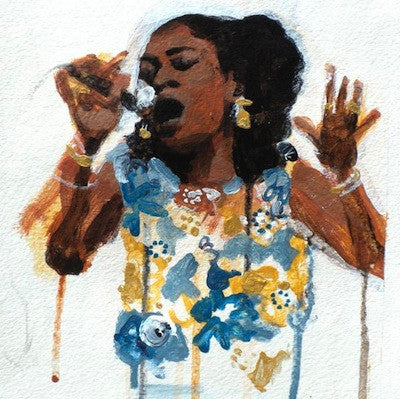\n\nOne of my favorites in recent years, the wonderful **Sharon Jones** captivated growing legions of audiences in the new millennium with her high-energy, charming personality and powerful voice on stages around the globe. A former security guard who made the big time, despite being told she was \"too short, too fat, too old and too black\", she worked hard for all of her success.\n\nBorn in Augusta GA, she grew up in Bed-Stuy Brooklyn. She contributed backing vocals to recording sessions before her work on a Lee Fields studio date convinced the producers that they had a special talent in Sharon. Her first featured cuts were with The Soul Providers and she cut some 45s for the pre-Daptone label Desco. Some of the 45s were bought by rare groove collectors who thought they were old records.\n\n2002's _Dap-Dippin' With Sharon Jones & the Dap-Kings_ was the first release on the brand new Daptone label and both Sharon and the company built a widely visible brand of quality, well-produced retro funk & soul. Aside from her own increasingly successful albums, she has also performed with artists ranging from Phish to Michael Bublé to Lou Reed to Booker T Jones to Greyboy & Quantic.\n\nI was fortunate enough to do a gig with her (as a DJ), as well as have her as a very memorable guest on my old _Radio Clandestino_ program. I've seen the band on several occasions and they really helped bring the now-ubiquitous retro-soul thing to the mainstream. And she was a hell of a performer and a very kind person.\n\nHere's the official video to one of Sharon's best-known songs:\n\nA legitimate question:\n\nA favorite Sharon 45 of mine is this Ticklah dub mix of \"How Long\":\n\nSharon and the Dap-Kings deep funk version of the Janet Jackson tune:\n\nThis one has her working with Quantic and Greyboy, Paul Nice on the tasty remix:\n\nCovering Prince:\n\nAnd here is some great live footage of the band in Paris, with Prince himself coming out to jam:\n\nHere's one of Sharon's earlier features:\n\nSharon and the boys on a float during the Macy's Thanksgiving Day parade:",
"filePath": "content/posts/sharon-jones-may-4-1956-nov-18-2016.md",
"digest": "f38dc5832b2312ac",
"rendered": {
"html": "<p><img src=\"/images/Sharon-Jones-painting-by-Dale-Dreiling_large.jpg\" alt=\"\"></p>\n<p>One of my favorites in recent years, the wonderful <strong>Sharon Jones</strong> captivated growing legions of audiences in the new millennium with her high-energy, charming personality and powerful voice on stages around the globe. A former security guard who made the big time, despite being told she was “too short, too fat, too old and too black”, she worked hard for all of her success.</p>\n<p>Born in Augusta GA, she grew up in Bed-Stuy Brooklyn. She contributed backing vocals to recording sessions before her work on a Lee Fields studio date convinced the producers that they had a special talent in Sharon. Her first featured cuts were with The Soul Providers and she cut some 45s for the pre-Daptone label Desco. Some of the 45s were bought by rare groove collectors who thought they were old records.</p>\n<p>2002’s <em>Dap-Dippin’ With Sharon Jones & the Dap-Kings</em> was the first release on the brand new Daptone label and both Sharon and the company built a widely visible brand of quality, well-produced retro funk & soul. Aside from her own increasingly successful albums, she has also performed with artists ranging from Phish to Michael Bublé to Lou Reed to Booker T Jones to Greyboy & Quantic.</p>\n<p>I was fortunate enough to do a gig with her (as a DJ), as well as have her as a very memorable guest on my old <em>Radio Clandestino</em> program. I’ve seen the band on several occasions and they really helped bring the now-ubiquitous retro-soul thing to the mainstream. And she was a hell of a performer and a very kind person.</p>\n<p>Here’s the official video to one of Sharon’s best-known songs:</p>\n<p>A legitimate question:</p>\n<p>A favorite Sharon 45 of mine is this Ticklah dub mix of “How Long”:</p>\n<p>Sharon and the Dap-Kings deep funk version of the Janet Jackson tune:</p>\n<p>This one has her working with Quantic and Greyboy, Paul Nice on the tasty remix:</p>\n<p>Covering Prince:</p>\n<p>And here is some great live footage of the band in Paris, with Prince himself coming out to jam:</p>\n<p>Here’s one of Sharon’s earlier features:</p>\n<p>Sharon and the boys on a float during the Macy’s Thanksgiving Day parade:</p>",
"metadata": {
"headings": [],
"localImagePaths": [],
"remoteImagePaths": [],
"frontmatter": {
"web-scraper-order": "1746561631-276",
"web-scraper-start-url": "https://peaceandrhythm.com",
"title": "Sharon Jones / May 4, 1956 - Nov 18, 2016",
"pagination": "https://www.peaceandrhythm.com/?page=57",
"date": "May 04, 2017",
"post": "Sharon Jones / May 4, 1956 - Nov 18, 2016",
"post-href": "https://www.peaceandrhythm.com/blogs/news/sharon-jones-may-4-1956-nov-18-2016",
"slug": "sharon-jones-may-4-1956-nov-18-2016"
},
"imagePaths": []
}
},
"collection": "blog"
},
{
"id": "james-brown-may-3-1933-dec-25-2006",
"data": {
"title": "James Brown / May 3, 1933 - Dec 25, 2006",
"slug": "james-brown-may-3-1933-dec-25-2006",
"date": "2017-05-03T00:00:00.000Z"
},
"body": "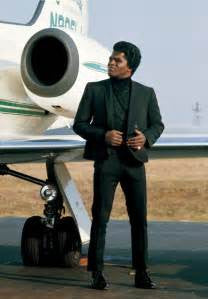\n\nHappy birthday to the Godfather of Soul, the Minister of the New New Superheavy Funk, Soul Brother #1, the hardest working man in show business, Mr Dynamite...**James Brown**!",
"filePath": "content/posts/james-brown-may-3-1933-dec-25-2006.md",
"digest": "c9cefb527b6ffe16",
"rendered": {
"html": "<p><img src=\"/images/th_9ab82a59-34c0-45b2-80ce-c205c51143f9_large.jpg\" alt=\"\"></p>\n<p>Happy birthday to the Godfather of Soul, the Minister of the New New Superheavy Funk, Soul Brother #1, the hardest working man in show business, Mr Dynamite…<strong>James Brown</strong>!</p>",
"metadata": {
"headings": [],
"localImagePaths": [],
"remoteImagePaths": [],
"frontmatter": {
"web-scraper-order": "1746561621-273",
"web-scraper-start-url": "https://peaceandrhythm.com",
"title": "James Brown / May 3, 1933 - Dec 25, 2006",
"pagination": "https://www.peaceandrhythm.com/?page=58",
"date": "May 03, 2017",
"post": "James Brown / May 3, 1933 - Dec 25, 2006",
"post-href": "https://www.peaceandrhythm.com/blogs/news/james-brown-may-3-1933-dec-25-2006",
"slug": "james-brown-may-3-1933-dec-25-2006"
},
"imagePaths": []
}
},
"collection": "blog"
},
{
"id": "eugenio-totico-arango-june-2-1934-jan-21-2011",
"data": {
"title": "Eugenio \"Totico\" Arango / June 2, 1934 - Jan 21, 2011",
"slug": "eugenio-totico-arango-june-2-1934-jan-21-2011",
"date": "2017-05-02T00:00:00.000Z"
},
"body": "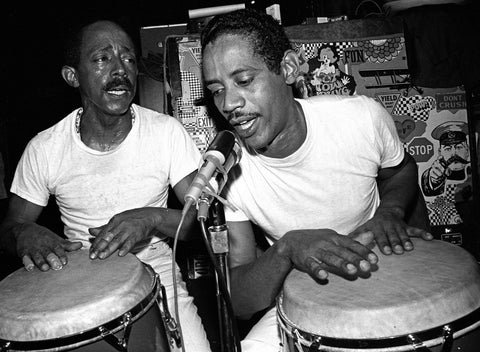\n\nOne of the rumberos who helped the tradition thrive in NYC, **Totico** is best known for teaming with Carlos \"Patato\" Valdes. Born in Havana, he arrived in Boston in '59 and moved to NYC shortly after. He quickly found work as a percussionist, playing with Max Roach, Abbey Lincoln & Eric Dolphy on Roach's incredible _Percussion Bittersuite_ album in '61. He also hooked up with Pupi Legarreta's charanga ensemble (check the _Salsa Nova_ LP) before the absolute classic rumba album _Patato & Totico_ on Verve ('68). The album features Arsenio Rodriguez and Cachao, and I love the killer version of \"Mas Que Nada\" from the set.\n\nAside from his partnership with Patato, he also teamed with Kako and played on recordings by Cachao, Pablo Milanes and Portuguese singer Luís Represas, among others. And cop his amazing '82 album _Totico y sus Rumberos_ , showcasing younger rumba players (including Puntilla Rios) and featuring a rumba version of the doo-wop tune \"What's Your Name\". Great stuff!\n\nHe is credited as composer or arranger (often with Patato) on several rumba \"standards\" played around the Latin music world. His percussion chops, his coros, his mentorship of serious younger students and his versatility to adapt the tradition to different contexts did much to keep the interest high in these songlines brought by African slaves to the sugar plantations of Cuba and into a popular and respected genre in the New World.",
"filePath": "content/posts/eugenio-totico-arango-june-2-1934-jan-21-2011.md",
"digest": "b7cc51767bd150eb",
"rendered": {
"html": "<p><img src=\"/images/TOTICO-obit-jumbo_large.jpg\" alt=\"\"></p>\n<p>One of the rumberos who helped the tradition thrive in NYC, <strong>Totico</strong> is best known for teaming with Carlos “Patato” Valdes. Born in Havana, he arrived in Boston in ‘59 and moved to NYC shortly after. He quickly found work as a percussionist, playing with Max Roach, Abbey Lincoln & Eric Dolphy on Roach’s incredible <em>Percussion Bittersuite</em> album in ‘61. He also hooked up with Pupi Legarreta’s charanga ensemble (check the <em>Salsa Nova</em> LP) before the absolute classic rumba album <em>Patato & Totico</em> on Verve (‘68). The album features Arsenio Rodriguez and Cachao, and I love the killer version of “Mas Que Nada” from the set.</p>\n<p>Aside from his partnership with Patato, he also teamed with Kako and played on recordings by Cachao, Pablo Milanes and Portuguese singer Luís Represas, among others. And cop his amazing ‘82 album <em>Totico y sus Rumberos</em> , showcasing younger rumba players (including Puntilla Rios) and featuring a rumba version of the doo-wop tune “What’s Your Name”. Great stuff!</p>\n<p>He is credited as composer or arranger (often with Patato) on several rumba “standards” played around the Latin music world. His percussion chops, his coros, his mentorship of serious younger students and his versatility to adapt the tradition to different contexts did much to keep the interest high in these songlines brought by African slaves to the sugar plantations of Cuba and into a popular and respected genre in the New World.</p>",
"metadata": {
"headings": [],
"localImagePaths": [],
"remoteImagePaths": [],
"frontmatter": {
"web-scraper-order": "1746561615-270",
"web-scraper-start-url": "https://peaceandrhythm.com",
"title": "Eugenio \"Totico\" Arango / June 2, 1934 - Jan 21, 2011",
"pagination": "https://www.peaceandrhythm.com/?page=58",
"date": "May 02, 2017",
"post": "Eugenio \"Totico\" Arango / June 2, 1934 - Jan 21, 2011",
"post-href": "https://www.peaceandrhythm.com/blogs/news/eugenio-totico-arango-june-2-1934-jan-21-2011",
"slug": "eugenio-totico-arango-june-2-1934-jan-21-2011"
},
"imagePaths": []
}
},
"collection": "blog"
},
{
"id": "lesley-gore-may-2-1946-feb-16-2015",
"data": {
"title": "Lesley Gore / May 2, 1946 - Feb 16, 2015",
"slug": "lesley-gore-may-2-1946-feb-16-2015",
"date": "2017-05-02T00:00:00.000Z"
},
"body": "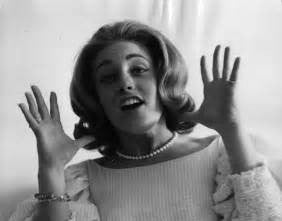\n\nThe original Riot Grrl, long before such a phenomenon, **Lesley Gore's** big hits, \"It's My Party\", \"Judy's Turn To Cry\", \"That's The Way Boys Are\" and the feminist statement \"You Don't Own Me\", were all produced by Quincy Jones and released while Lesley was still in high school.\n\nShe was popular in the mid '60s, appearing in films and television, before the hippy generation tossed her aside for awhile. She found some more success with the movie _Fame_ , writing \"Out Here On My Own\" for Irene Cara. A lesbian herself, she hosted a LGBT rights-oriented TV show for a stretch in the 2000s. And it must be stated...she was a favorite of [Noise Nomads](https://www.youtube.com/watch?v=72SDRWTdc9o).",
"filePath": "content/posts/lesley-gore-may-2-1946-feb-16-2015.md",
"digest": "6b89f2690ff4847c",
"rendered": {
"html": "<p><img src=\"/images/th_ee5d1df2-25dc-4cbb-ab54-1e346d0cccca_large.jpg\" alt=\"\"></p>\n<p>The original Riot Grrl, long before such a phenomenon, <strong>Lesley Gore’s</strong> big hits, “It’s My Party”, “Judy’s Turn To Cry”, “That’s The Way Boys Are” and the feminist statement “You Don’t Own Me”, were all produced by Quincy Jones and released while Lesley was still in high school.</p>\n<p>She was popular in the mid ’60s, appearing in films and television, before the hippy generation tossed her aside for awhile. She found some more success with the movie <em>Fame</em> , writing “Out Here On My Own” for Irene Cara. A lesbian herself, she hosted a LGBT rights-oriented TV show for a stretch in the 2000s. And it must be stated…she was a favorite of <a href=\"https://www.youtube.com/watch?v=72SDRWTdc9o\">Noise Nomads</a>.</p>",
"metadata": {
"headings": [],
"localImagePaths": [],
"remoteImagePaths": [],
"frontmatter": {
"web-scraper-order": "1746561617-271",
"web-scraper-start-url": "https://peaceandrhythm.com",
"title": "Lesley Gore / May 2, 1946 - Feb 16, 2015",
"pagination": "https://www.peaceandrhythm.com/?page=58",
"date": "May 02, 2017",
"post": "Lesley Gore / May 2, 1946 - Feb 16, 2015",
"post-href": "https://www.peaceandrhythm.com/blogs/news/lesley-gore-may-2-1946-feb-16-2015",
"slug": "lesley-gore-may-2-1946-feb-16-2015"
},
"imagePaths": []
}
},
"collection": "blog"
},
{
"id": "link-wray-may-2-1929-nov-5-2005",
"data": {
"title": "Link Wray / May 2, 1929 - Nov 5, 2005",
"slug": "link-wray-may-2-1929-nov-5-2005",
"date": "2017-05-02T00:00:00.000Z"
},
"body": "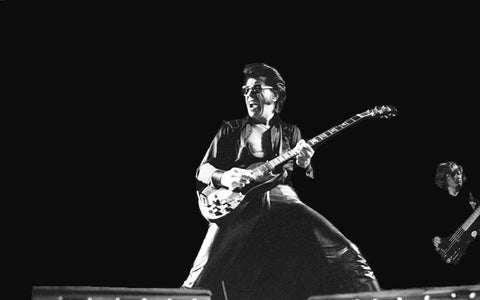\n\nThe great Shawnee rocker **Link Wray** invented the power chord and helped set off the hard rock revolution, influencing punk, thrash & heavy metal with his 1958 hit \"Rumble\" spawning the future headbanger generation.\n\nHe made his first record in '55, before heading to Korea with the Army. He got tuberculosis and spent a year in the hospital. A lung was removed and he was told he'd never sing again (they were wrong). So he started working out instrumentals and made several records, some of which were recorded in a makeshift studio in a chicken shack (often in partnership with his brothers).\n\nThe North Carolina-born guitarist used distortion on his rockabilly sound and became a sensation with teenagers in the late '50s. His recording of \"Rumble\", a tune originally improvised on the spot at a Washington DC record-hop, faced a radio ban in some cities as authorities feared the song would turn teens violent. Of course, that sensation attracted the youth to his radical sound.\n\nAfter several attempts by labels to \"clean\" up his sound (recording with orchestras, etc) the Wray Brothers formed their own Rumble Records to release a few titles. He formed a band in San Francisco with Quicksilver's John Cipollina and also had a cult classic self-titled album in '71 for Polydor. In the later '70s he played in Robert Gordon's band. By the time the '80s rolled around he had moved to Scandinavia, sporadically releasing records and performing at his own desire, staying semi-active until his death. His influence is massive. Pete Townshend: \"If it hadn't been for Link Wray and 'Rumble,' I never would have picked up a guitar.\"\n\nAnd here's a l'il bonus for y'all:",
"filePath": "content/posts/link-wray-may-2-1929-nov-5-2005.md",
"digest": "3c917d00e9becaed",
"rendered": {
"html": "<p><img src=\"/images/LinkWray_14_A_large.jpg\" alt=\"\"></p>\n<p>The great Shawnee rocker <strong>Link Wray</strong> invented the power chord and helped set off the hard rock revolution, influencing punk, thrash & heavy metal with his 1958 hit “Rumble” spawning the future headbanger generation.</p>\n<p>He made his first record in ‘55, before heading to Korea with the Army. He got tuberculosis and spent a year in the hospital. A lung was removed and he was told he’d never sing again (they were wrong). So he started working out instrumentals and made several records, some of which were recorded in a makeshift studio in a chicken shack (often in partnership with his brothers).</p>\n<p>The North Carolina-born guitarist used distortion on his rockabilly sound and became a sensation with teenagers in the late ’50s. His recording of “Rumble”, a tune originally improvised on the spot at a Washington DC record-hop, faced a radio ban in some cities as authorities feared the song would turn teens violent. Of course, that sensation attracted the youth to his radical sound.</p>\n<p>After several attempts by labels to “clean” up his sound (recording with orchestras, etc) the Wray Brothers formed their own Rumble Records to release a few titles. He formed a band in San Francisco with Quicksilver’s John Cipollina and also had a cult classic self-titled album in ‘71 for Polydor. In the later ’70s he played in Robert Gordon’s band. By the time the ’80s rolled around he had moved to Scandinavia, sporadically releasing records and performing at his own desire, staying semi-active until his death. His influence is massive. Pete Townshend: “If it hadn’t been for Link Wray and ‘Rumble,’ I never would have picked up a guitar.”</p>\n<p>And here’s a l’il bonus for y’all:</p>",
"metadata": {
"headings": [],
"localImagePaths": [],
"remoteImagePaths": [],
"frontmatter": {
"web-scraper-order": "1746561619-272",
"web-scraper-start-url": "https://peaceandrhythm.com",
"title": "Link Wray / May 2, 1929 - Nov 5, 2005",
"pagination": "https://www.peaceandrhythm.com/?page=58",
"date": "May 02, 2017",
"post": "Link Wray / May 2, 1929 - Nov 5, 2005",
"post-href": "https://www.peaceandrhythm.com/blogs/news/link-wray-may-2-1929-nov-5-2005",
"slug": "link-wray-may-2-1929-nov-5-2005"
},
"imagePaths": []
}
},
"collection": "blog"
},
{
"id": "little-walter-may-1-1930-feb-15-1968",
"data": {
"title": "Little Walter / May 1, 1930 - Feb 15, 1968",
"slug": "little-walter-may-1-1930-feb-15-1968",
"date": "2017-05-01T00:00:00.000Z"
},
"body": "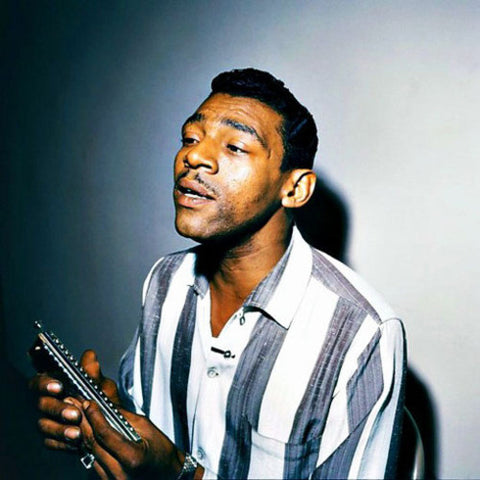\n\nBlues harp icon **Little Walter** Jacobs influenced nearly every single blues and rock harmonica player that came after him, Junior Wells included. He was hugely popular in the '50s with his loose & jazzy updates of old blues tunes, as well as original compositions hitting the charts and attaining worldwide popularity.\n\nBorn and raised in Louisiana, he quit school at 12 to busk and work in various cities in the South, playing with Honeyboy Edwards and Sunnyland Slim along the way before hitting the Windy City in '45. Chicago, being the loud & buzzing town that it was, forced Walter to plug in via a microphone he held cupped in his hand to be able to compete with the loud guitars and he brought this advantage to its fullest, utilizing distortion as part of the art. As they say, he was the Hendrix of the harmonica. (It must be noted that he didn't record with the the plugged-in set-up 'til '51.) He would simply walk into Chicago joints, jump up on stage, and blow away the competition.\n\nStarting around '47 he was cutting disks for local labels and joined Muddy Waters' band in '48 for a four-year stint. He continued to do sessions for Chess Records (including on Muddy's disks), even contributing some guitar playing. He also started up his own band in '52 and immediately had a #1 hit (\"Juke\") from his very first take of his first tune at his first leader session for Chess subsidiary Checker. \"My Babe\" was also a #1 hit in '55. A couple of saxophonists that would appear with Little Walter in the '50s: young Albert Ayler and Ray Charles! (Yes, Ray was a saxophonist as well.)\n\nHe toured Europe in '64 and '67. In addition to his own hit records and his work with Muddy he can be heard on records by Memphis Minnie, Bo Diddley, Shel Silverstein, Otis Rush, Robert Nighthawk, Koko Taylor and others. His boozing and brawling got the best of him and he died in his sleep from internal bleeding at 37.",
"filePath": "content/posts/little-walter-may-1-1930-feb-15-1968.md",
"digest": "6980eacda120e1e8",
"rendered": {
"html": "<p><img src=\"/images/tumblr_m4lw2rNstu1r8kwyw_large.jpg\" alt=\"\"></p>\n<p>Blues harp icon <strong>Little Walter</strong> Jacobs influenced nearly every single blues and rock harmonica player that came after him, Junior Wells included. He was hugely popular in the ’50s with his loose & jazzy updates of old blues tunes, as well as original compositions hitting the charts and attaining worldwide popularity.</p>\n<p>Born and raised in Louisiana, he quit school at 12 to busk and work in various cities in the South, playing with Honeyboy Edwards and Sunnyland Slim along the way before hitting the Windy City in ‘45. Chicago, being the loud & buzzing town that it was, forced Walter to plug in via a microphone he held cupped in his hand to be able to compete with the loud guitars and he brought this advantage to its fullest, utilizing distortion as part of the art. As they say, he was the Hendrix of the harmonica. (It must be noted that he didn’t record with the the plugged-in set-up ‘til ‘51.) He would simply walk into Chicago joints, jump up on stage, and blow away the competition.</p>\n<p>Starting around ‘47 he was cutting disks for local labels and joined Muddy Waters’ band in ‘48 for a four-year stint. He continued to do sessions for Chess Records (including on Muddy’s disks), even contributing some guitar playing. He also started up his own band in ‘52 and immediately had a #1 hit (“Juke”) from his very first take of his first tune at his first leader session for Chess subsidiary Checker. “My Babe” was also a #1 hit in ‘55. A couple of saxophonists that would appear with Little Walter in the ’50s: young Albert Ayler and Ray Charles! (Yes, Ray was a saxophonist as well.)</p>\n<p>He toured Europe in ‘64 and ‘67. In addition to his own hit records and his work with Muddy he can be heard on records by Memphis Minnie, Bo Diddley, Shel Silverstein, Otis Rush, Robert Nighthawk, Koko Taylor and others. His boozing and brawling got the best of him and he died in his sleep from internal bleeding at 37.</p>",
"metadata": {
"headings": [],
"localImagePaths": [],
"remoteImagePaths": [],
"frontmatter": {
"web-scraper-order": "1746561612-269",
"web-scraper-start-url": "https://peaceandrhythm.com",
"title": "Little Walter / May 1, 1930 - Feb 15, 1968",
"pagination": "https://www.peaceandrhythm.com/?page=58",
"date": "May 01, 2017",
"post": "Little Walter / May 1, 1930 - Feb 15, 1968",
"post-href": "https://www.peaceandrhythm.com/blogs/news/little-walter-may-1-1930-feb-15-1968",
"slug": "little-walter-may-1-1930-feb-15-1968"
},
"imagePaths": []
}
},
"collection": "blog"
},
{
"id": "marva-whitney-may-1-1944-dec-22-2012",
"data": {
"title": "Marva Whitney / May 1, 1944 - Dec 22, 2012",
"slug": "marva-whitney-may-1-1944-dec-22-2012",
"date": "2017-05-01T00:00:00.000Z"
},
"body": "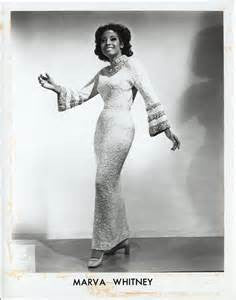\n\nForever associated with James Brown as one of his funky divas, **Marva Whitney** is fondly remembered for her raw vocal attack on some of the funkiest records ever made. From Kansas City, she came up in a gospel-singing family, performing as early as 1947 when she was three years old.\n\nShe sang in R&B bands locally until '67. After rejecting offers to tour with Bobby \"Blue\" Bland and Little Richard, she signed on to join the James Brown Revue, which included her own featured set. She toured the world with JB (including Vietnam and Africa) and had a romantic relationship with him. During a sort-of feud between James and the Isley Brothers in '69 she recorded an answer record to the Isleys' \"It's Your Thing\" called \"It's My Thing (You Can't Tell Me Who To Sock It To)\", which became her first hit, followed by more chart hits and three albums.\n\nBy 1970 she had quit the JB Revue and was back in KC. She recorded a sought-after 45 for the Isleys T-Neck label that year, as well as '70s singles for Forte and Excello. The '80s were generally quiet save for a spell touring with former Brown sidemen as the JB All Stars. She got back to the gospel in the '90s before a comeback with Japanese funk group Osaka Monaurail in 2006, including two well-received tours of Japan and three tours of Europe.\n\nShe collapsed onstage while performing in Australia in 2009 and was off the scene for a year or so. She then performed again until her death from pneumonia in late 2012. Her songs have been heavily sampled by the hip-hop generation and she will forever be known as one of the great soul sisters.",
"filePath": "content/posts/marva-whitney-may-1-1944-dec-22-2012.md",
"digest": "c9462377d1546665",
"rendered": {
"html": "<p><img src=\"/images/th_14dfd47e-76bd-4b2f-a610-db8289121d94_large.jpg\" alt=\"\"></p>\n<p>Forever associated with James Brown as one of his funky divas, <strong>Marva Whitney</strong> is fondly remembered for her raw vocal attack on some of the funkiest records ever made. From Kansas City, she came up in a gospel-singing family, performing as early as 1947 when she was three years old.</p>\n<p>She sang in R&B bands locally until ‘67. After rejecting offers to tour with Bobby “Blue” Bland and Little Richard, she signed on to join the James Brown Revue, which included her own featured set. She toured the world with JB (including Vietnam and Africa) and had a romantic relationship with him. During a sort-of feud between James and the Isley Brothers in ‘69 she recorded an answer record to the Isleys’ “It’s Your Thing” called “It’s My Thing (You Can’t Tell Me Who To Sock It To)”, which became her first hit, followed by more chart hits and three albums.</p>\n<p>By 1970 she had quit the JB Revue and was back in KC. She recorded a sought-after 45 for the Isleys T-Neck label that year, as well as ’70s singles for Forte and Excello. The ’80s were generally quiet save for a spell touring with former Brown sidemen as the JB All Stars. She got back to the gospel in the ’90s before a comeback with Japanese funk group Osaka Monaurail in 2006, including two well-received tours of Japan and three tours of Europe.</p>\n<p>She collapsed onstage while performing in Australia in 2009 and was off the scene for a year or so. She then performed again until her death from pneumonia in late 2012. Her songs have been heavily sampled by the hip-hop generation and she will forever be known as one of the great soul sisters.</p>",
"metadata": {
"headings": [],
"localImagePaths": [],
"remoteImagePaths": [],
"frontmatter": {
"web-scraper-order": "1746561610-268",
"web-scraper-start-url": "https://peaceandrhythm.com",
"title": "Marva Whitney / May 1, 1944 - Dec 22, 2012",
"pagination": "https://www.peaceandrhythm.com/?page=59",
"date": "May 01, 2017",
"post": "Marva Whitney / May 1, 1944 - Dec 22, 2012",
"post-href": "https://www.peaceandrhythm.com/blogs/news/marva-whitney-may-1-1944-dec-22-2012",
"slug": "marva-whitney-may-1-1944-dec-22-2012"
},
"imagePaths": []
}
},
"collection": "blog"
},
{
"id": "duke-ellington-april-29-1899-may-24-1974",
"data": {
"title": "Duke Ellington / April 29, 1899 - May 24, 1974",
"slug": "duke-ellington-april-29-1899-may-24-1974",
"date": "2017-04-29T00:00:00.000Z"
},
"body": "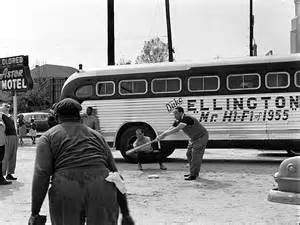\n\nHappy birthday to the greatest American composer, **Duke Ellington**!",
"filePath": "content/posts/duke-ellington-april-29-1899-may-24-1974.md",
"digest": "a8af7df81e95bb3a",
"rendered": {
"html": "<p><img src=\"/images/th-4_large.jpg\" alt=\"\"></p>\n<p>Happy birthday to the greatest American composer, <strong>Duke Ellington</strong>!</p>",
"metadata": {
"headings": [],
"localImagePaths": [],
"remoteImagePaths": [],
"frontmatter": {
"web-scraper-order": "1746561608-267",
"web-scraper-start-url": "https://peaceandrhythm.com",
"title": "Duke Ellington / April 29, 1899 - May 24, 1974",
"pagination": "https://www.peaceandrhythm.com/?page=59",
"date": "April 29, 2017",
"post": "Duke Ellington / April 29, 1899 - May 24, 1974",
"post-href": "https://www.peaceandrhythm.com/blogs/news/duke-ellington-april-29-1899-may-24-1974",
"slug": "duke-ellington-april-29-1899-may-24-1974"
},
"imagePaths": []
}
},
"collection": "blog"
},
{
"id": "hasil-adkins-april-29-1937-april-26-2005",
"data": {
"title": "Hasil Adkins / April 29, 1937 - April 26, 2005",
"slug": "hasil-adkins-april-29-1937-april-26-2005",
"date": "2017-04-29T00:00:00.000Z"
},
"body": "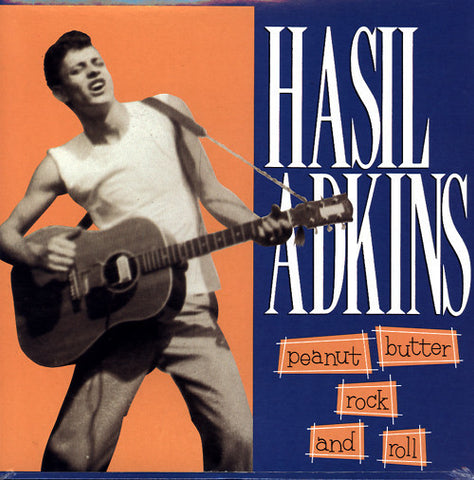\n\nOn this day of birth for many great musicians, I have to give a nod to a personal favorite of mine, the outsider rockabilly/country wildman **Hasil Adkins**. A one-redneck band who could play percussion and guitar at the same time, this guy whooped it up like a punk rocker before such thing existed, with some of the most bizarre stories ever set to song. His songs talked about sex, chicken, hot dogs, aliens, his car (which he named \"the Hunchin' Wagon), dealings with the law, decapitating heads, eating peanut butter on the moon and other crucial issues of his world, with his extremely unique and amateurish delivery.\n\nHis (usually self-produced) crude records were distributed meagerly in the '50s & '60s around West Virginia (where he grew up in extreme poverty) and barely beyond. He was a one-man band because, he later explained, he assumed that the name of the artist on the records he had as a kid was the person who played all the instruments.\n\nHe was a world-class(less?) eccentric who sent his records to every President. Dick Nixon wrote back: \"I am very pleased by your thoughtfulness in bringing these particular selections to my attention.\" If one were to take some of his lyrics seriously you would most definitely find a psychopath. (This was a man who claimed to regularly send an extension cord out to his fishing hole so he could watch \"Wheel of Fortune\" while he fished).\n\nA proto-punk icon and the godfather of psychobilly, The Cramps and Norton Records did much to bring him into vogue in the '80s and he developed a cult following. In later years he recorded for Fat Possum and took some minor acting roles. He died from injuries sustained after being run over by an ATV.\n\nHere's an example of what the President may have heard if he played the man's records:",
"filePath": "content/posts/hasil-adkins-april-29-1937-april-26-2005.md",
"digest": "5188cb34953f3fe0",
"rendered": {
"html": "<p><img src=\"/images/R-1107775-1384208222-4563_jpeg_large.jpg\" alt=\"\"></p>\n<p>On this day of birth for many great musicians, I have to give a nod to a personal favorite of mine, the outsider rockabilly/country wildman <strong>Hasil Adkins</strong>. A one-redneck band who could play percussion and guitar at the same time, this guy whooped it up like a punk rocker before such thing existed, with some of the most bizarre stories ever set to song. His songs talked about sex, chicken, hot dogs, aliens, his car (which he named “the Hunchin’ Wagon), dealings with the law, decapitating heads, eating peanut butter on the moon and other crucial issues of his world, with his extremely unique and amateurish delivery.</p>\n<p>His (usually self-produced) crude records were distributed meagerly in the ’50s & ’60s around West Virginia (where he grew up in extreme poverty) and barely beyond. He was a one-man band because, he later explained, he assumed that the name of the artist on the records he had as a kid was the person who played all the instruments.</p>\n<p>He was a world-class(less?) eccentric who sent his records to every President. Dick Nixon wrote back: “I am very pleased by your thoughtfulness in bringing these particular selections to my attention.” If one were to take some of his lyrics seriously you would most definitely find a psychopath. (This was a man who claimed to regularly send an extension cord out to his fishing hole so he could watch “Wheel of Fortune” while he fished).</p>\n<p>A proto-punk icon and the godfather of psychobilly, The Cramps and Norton Records did much to bring him into vogue in the ’80s and he developed a cult following. In later years he recorded for Fat Possum and took some minor acting roles. He died from injuries sustained after being run over by an ATV.</p>\n<p>Here’s an example of what the President may have heard if he played the man’s records:</p>",
"metadata": {
"headings": [],
"localImagePaths": [],
"remoteImagePaths": [],
"frontmatter": {
"web-scraper-order": "1746561603-265",
"web-scraper-start-url": "https://peaceandrhythm.com",
"title": "Hasil Adkins / April 29, 1937 - April 26, 2005",
"pagination": "https://www.peaceandrhythm.com/?page=59",
"date": "April 29, 2017",
"post": "Hasil Adkins / April 29, 1937 - April 26, 2005",
"post-href": "https://www.peaceandrhythm.com/blogs/news/hasil-adkins-april-29-1937-april-26-2005",
"slug": "hasil-adkins-april-29-1937-april-26-2005"
},
"imagePaths": []
}
},
"collection": "blog"
},
{
"id": "maya-deren-april-29-1917-oct-13-1961",
"data": {
"title": "Maya Deren / April 29, 1917 - Oct 13, 1961",
"slug": "maya-deren-april-29-1917-oct-13-1961",
"date": "2017-04-29T00:00:00.000Z"
},
"body": "**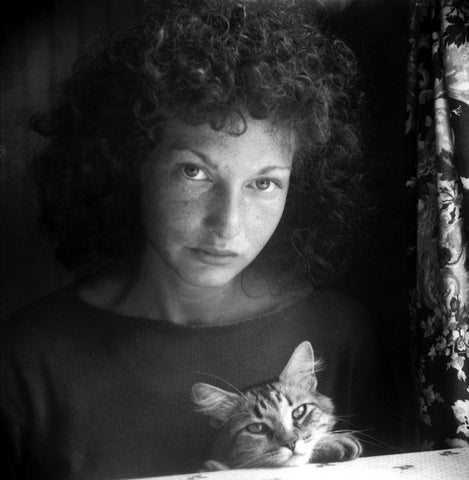**\n\n**Maya Deren** was the mother of American avant-garde cinema. Her films were surreal and intense, full of symbolism and incredibly strange ideas. Check out _The Very Eye of Night_ , _Meshes of the Afternoon_ and _At Land_.\n\nShe was a Ukrainian Jew who fled to the US with her family to escape the ethnic-cleansing pogrom. Her first husband was a socialist activist who she married at 18. Her second husband, famous European photographer Alexander Hammid, was co-collaborator on _Meshes_ and her third husband, Japanese-American composer Teiji Ito, made some amazing soundtracks to these films. John Cage and Marcel Duchamp were involved in her films as well.\n\nShe was also a dancer, choreographer, writer, photographer and nude model. She spoke several languages and was personal secretary for Katherine Dunham. She was also involved in ethnography and went to Haiti to film voodoo rituals for her documentary _Divine Horsemen: The Living Gods of Haiti_ , which is an important source on the subject. In 1953 the new Elektra label released a 10\" of some of her Haitian field recordings. She died at the age of 44 from a brain aneurysm.",
"filePath": "content/posts/maya-deren-april-29-1917-oct-13-1961.md",
"digest": "723060eb8909fa53",
"rendered": {
"html": "<p><strong><img src=\"/images/5896fce5b54715ac5bf893284dd26739_large.jpg\" alt=\"\"></strong></p>\n<p><strong>Maya Deren</strong> was the mother of American avant-garde cinema. Her films were surreal and intense, full of symbolism and incredibly strange ideas. Check out <em>The Very Eye of Night</em> , <em>Meshes of the Afternoon</em> and <em>At Land</em>.</p>\n<p>She was a Ukrainian Jew who fled to the US with her family to escape the ethnic-cleansing pogrom. Her first husband was a socialist activist who she married at 18. Her second husband, famous European photographer Alexander Hammid, was co-collaborator on <em>Meshes</em> and her third husband, Japanese-American composer Teiji Ito, made some amazing soundtracks to these films. John Cage and Marcel Duchamp were involved in her films as well.</p>\n<p>She was also a dancer, choreographer, writer, photographer and nude model. She spoke several languages and was personal secretary for Katherine Dunham. She was also involved in ethnography and went to Haiti to film voodoo rituals for her documentary <em>Divine Horsemen: The Living Gods of Haiti</em> , which is an important source on the subject. In 1953 the new Elektra label released a 10” of some of her Haitian field recordings. She died at the age of 44 from a brain aneurysm.</p>",
"metadata": {
"headings": [],
"localImagePaths": [],
"remoteImagePaths": [],
"frontmatter": {
"web-scraper-order": "1746561594-263",
"web-scraper-start-url": "https://peaceandrhythm.com",
"title": "Maya Deren / April 29, 1917 - Oct 13, 1961",
"pagination": "https://www.peaceandrhythm.com/?page=60",
"date": "April 29, 2017",
"post": "Maya Deren / April 29, 1917 - Oct 13, 1961",
"post-href": "https://www.peaceandrhythm.com/blogs/news/maya-deren-april-29-1917-oct-13-1961",
"slug": "maya-deren-april-29-1917-oct-13-1961"
},
"imagePaths": []
}
},
"collection": "blog"
},
{
"id": "ray-barretto-april-29-1929-feb-17-2006",
"data": {
"title": "Ray Barretto / April 29, 1929 - Feb 17, 2006",
"slug": "ray-barretto-april-29-1929-feb-17-2006",
"date": "2017-04-29T00:00:00.000Z"
},
"body": "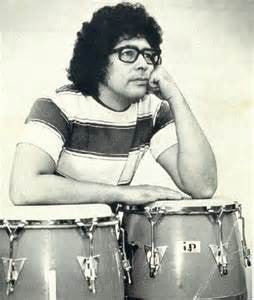\n\nThe great Nuyorican percussionist, bandleader and composer **Ray Barretto** (Mr Hard Hands) retains a huge legacy, greatly influencing many percussionists and Latino jazz artists, and standing as a towering figure in the landscape of salsa music.\n\nHe was checking out the bebop scene in the late '40s and honing his chops before getting the tap to play with Charlie Parker. He then worked in Tito Puente's band for four years in the late '50s. In the '60s he was a first-call percussionist for sessions at various jazz labels (Blue Note, Prestige, Riverside, etc), as well as playing with Herbie Mann. He started his own bands and had a big charanga/boogaloo hit with \"El Watusi\" in '61.\n\nHe recorded several strong albums for Tico and United Artists before signing to Fania in '67. His classic late '60s records for the label were a very hip mixture of various Latin styles (especially some burning descargas) and psychedelic soul. He recorded a bunch of massive albums for the label through the '80s with some successful detours to Atlantic and CTI. His later albums concentrated on his jazz sextet, recording albums for Concord, Blue Note and others.\n\nThe music he played in his career covered a lot of ground: swing, descarga, mambo, charanga, soul, progressive salsa, boogaloo, disco, fusion, Afro-Cuban, psychedelia, pop and more. One of the most recorded congueros in the sessions, he contributed to the albums of Red Garland, Charlie Byrd, Wes Montgomery, Cannonball Adderley, Lou Donaldson, Lockjaw Davis, Gene Ammons, Yusef Lateef, Dizzy Gillespie, Billy Cobham, Quincy Jones, Celia Cruz, Weather Report, Sheila E, Rolling Stones, Bee Gees and of course the Fania All-Stars, among many others. Along with Dizzy Gillespie, Cachao, Chano Pozo, Sabu Martinez and others he could rightly be considered among the fathers of Latin Jazz.",
"filePath": "content/posts/ray-barretto-april-29-1929-feb-17-2006.md",
"digest": "efd59f2bf4f0ddb6",
"rendered": {
"html": "<p><img src=\"/images/th-3_large.jpg\" alt=\"\"></p>\n<p>The great Nuyorican percussionist, bandleader and composer <strong>Ray Barretto</strong> (Mr Hard Hands) retains a huge legacy, greatly influencing many percussionists and Latino jazz artists, and standing as a towering figure in the landscape of salsa music.</p>\n<p>He was checking out the bebop scene in the late ’40s and honing his chops before getting the tap to play with Charlie Parker. He then worked in Tito Puente’s band for four years in the late ’50s. In the ’60s he was a first-call percussionist for sessions at various jazz labels (Blue Note, Prestige, Riverside, etc), as well as playing with Herbie Mann. He started his own bands and had a big charanga/boogaloo hit with “El Watusi” in ‘61.</p>\n<p>He recorded several strong albums for Tico and United Artists before signing to Fania in ‘67. His classic late ’60s records for the label were a very hip mixture of various Latin styles (especially some burning descargas) and psychedelic soul. He recorded a bunch of massive albums for the label through the ’80s with some successful detours to Atlantic and CTI. His later albums concentrated on his jazz sextet, recording albums for Concord, Blue Note and others.</p>\n<p>The music he played in his career covered a lot of ground: swing, descarga, mambo, charanga, soul, progressive salsa, boogaloo, disco, fusion, Afro-Cuban, psychedelia, pop and more. One of the most recorded congueros in the sessions, he contributed to the albums of Red Garland, Charlie Byrd, Wes Montgomery, Cannonball Adderley, Lou Donaldson, Lockjaw Davis, Gene Ammons, Yusef Lateef, Dizzy Gillespie, Billy Cobham, Quincy Jones, Celia Cruz, Weather Report, Sheila E, Rolling Stones, Bee Gees and of course the Fania All-Stars, among many others. Along with Dizzy Gillespie, Cachao, Chano Pozo, Sabu Martinez and others he could rightly be considered among the fathers of Latin Jazz.</p>",
"metadata": {
"headings": [],
"localImagePaths": [],
"remoteImagePaths": [],
"frontmatter": {
"web-scraper-order": "1746561606-266",
"web-scraper-start-url": "https://peaceandrhythm.com",
"title": "Ray Barretto / April 29, 1929 - Feb 17, 2006",
"pagination": "https://www.peaceandrhythm.com/?page=59",
"date": "April 29, 2017",
"post": "Ray Barretto / April 29, 1929 - Feb 17, 2006",
"post-href": "https://www.peaceandrhythm.com/blogs/news/ray-barretto-april-29-1929-feb-17-2006",
"slug": "ray-barretto-april-29-1929-feb-17-2006"
},
"imagePaths": []
}
},
"collection": "blog"
},
{
"id": "style-scott-april-29-1956-oct-9-2014",
"data": {
"title": "Style Scott / April 29, 1956 - Oct 9, 2014",
"slug": "style-scott-april-29-1956-oct-9-2014",
"date": "2017-04-29T00:00:00.000Z"
},
"body": "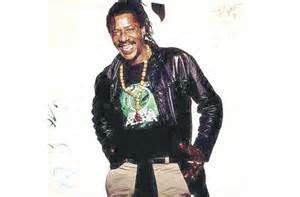\n\nHappy born day shout-out to Lincoln **\"Style\" Scott** , the great Jamaican drummer with Dub Syndicate, the Roots Radics (who became the Channel One house band around '79) and about a million Adrian Sherwood/On-U Sound projects.\n\nHis earliest record appearances were with Sugar Minott (\"Hard Time Pressure\") and David Isaacs. In '78 he became drummer for Prince Far-I & the Arabs, who were also largely the same group as Sherwood's Creation Rebel. With the Radics he helped lay the foundation for what became known as dancehall music. He played with Gregory Isaacs (that's Scott on \"Night Nurse\"), Barrington Levy, Eek-A-Mouse, Bunny Wailer (with whom he played Madison Square Garden in '86), Capleton, Bill Laswell and many, many more. He also ran the Lion & Roots label. Despite the digital revolution of the '80s putting many musicians in Jamaica out of work Scott was able to keep fresh and busy with work in the UK and elsewhere for several decades.\n\nI remember reading an interview with Scott from around 2013 where, when asked about possible motives to Winston Riley's murder, he said something along the lines about how if people see a musician's name on several album credits and that they tour Europe (both of which would fit Scott) then some people may assume someone has a lot of money. As with the unsolved murders of several Jamaican artists, Scott had a good point about the mystery concerning Riley's death.\n\nUnfortunately, just a few months after that interview was published, Scott himself was found to be the victim of a homicide at the age of 58. His brand new album with Dub Syndicate was finished but had not yet been released (_Hard Food_ , Echo Beach Recordings).",
"filePath": "content/posts/style-scott-april-29-1956-oct-9-2014.md",
"digest": "b65bbfb6df868b2e",
"rendered": {
"html": "<p><img src=\"/images/th_f34c84fa-9d0f-484f-964e-4f9dd11b6c97_large.jpg\" alt=\"\"></p>\n<p>Happy born day shout-out to Lincoln <strong>“Style” Scott</strong> , the great Jamaican drummer with Dub Syndicate, the Roots Radics (who became the Channel One house band around ‘79) and about a million Adrian Sherwood/On-U Sound projects.</p>\n<p>His earliest record appearances were with Sugar Minott (“Hard Time Pressure”) and David Isaacs. In ‘78 he became drummer for Prince Far-I & the Arabs, who were also largely the same group as Sherwood’s Creation Rebel. With the Radics he helped lay the foundation for what became known as dancehall music. He played with Gregory Isaacs (that’s Scott on “Night Nurse”), Barrington Levy, Eek-A-Mouse, Bunny Wailer (with whom he played Madison Square Garden in ‘86), Capleton, Bill Laswell and many, many more. He also ran the Lion & Roots label. Despite the digital revolution of the ’80s putting many musicians in Jamaica out of work Scott was able to keep fresh and busy with work in the UK and elsewhere for several decades.</p>\n<p>I remember reading an interview with Scott from around 2013 where, when asked about possible motives to Winston Riley’s murder, he said something along the lines about how if people see a musician’s name on several album credits and that they tour Europe (both of which would fit Scott) then some people may assume someone has a lot of money. As with the unsolved murders of several Jamaican artists, Scott had a good point about the mystery concerning Riley’s death.</p>\n<p>Unfortunately, just a few months after that interview was published, Scott himself was found to be the victim of a homicide at the age of 58. His brand new album with Dub Syndicate was finished but had not yet been released (<em>Hard Food</em> , Echo Beach Recordings).</p>",
"metadata": {
"headings": [],
"localImagePaths": [],
"remoteImagePaths": [],
"frontmatter": {
"web-scraper-order": "1746561592-262",
"web-scraper-start-url": "https://peaceandrhythm.com",
"title": "Style Scott / April 29, 1956 - Oct 9, 2014",
"pagination": "https://www.peaceandrhythm.com/?page=60",
"date": "April 29, 2017",
"post": "Style Scott / April 29, 1956 - Oct 9, 2014",
"post-href": "https://www.peaceandrhythm.com/blogs/news/style-scott-april-29-1956-oct-9-2014",
"slug": "style-scott-april-29-1956-oct-9-2014"
},
"imagePaths": []
}
},
"collection": "blog"
},
{
"id": "tammi-terrell-april-29-1945-march-16-1970",
"data": {
"title": "Tammi Terrell / April 29, 1945 - March 16, 1970",
"slug": "tammi-terrell-april-29-1945-march-16-1970",
"date": "2017-04-29T00:00:00.000Z"
},
"body": "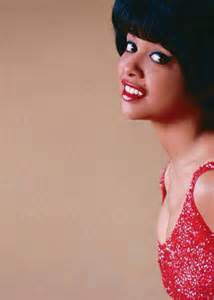\n\nSinger and songwriter **Tammi Terrell's** star burned bright in her short career, one marked by abuse and tragedy yet she remains a popular artist 45 years after her death.\n\nFrom Philadelphia, two things happened that would positively and negatively affect her life: she was found to have immense talent and was also often subdued by intense migraine headaches (the latter of which started happening after she was raped by neighborhood boys, later convicted, at 11). She hit the road as a teenager with Patti LaBelle and Gary US Bonds and recorded for Wand and Chess Records subsidiary Checker. She sang back-up with the James Brown Revue, also cutting a minor hit single in '63 (\"I Cried\") that was produced by JB. She walked off the Revue when James allegedly became abusive during their personal/romantic relationship.\n\nShe signed with Motown in '65 and quickly became musical partners with Marvin Gaye. Both singers had previously worked in duet (Terrell with Jimmy Radcliffe & Jerry Butler, Gaye with Kim Weston, Mary Wells and Oma Heard) and they found instant chemistry. Gaye found her to be a level above the others with her talent, stage presence and professionalism, all of which fit the shy Gaye. Not only did they have huge hits on stage but they became very close friends off stage. \"Ain't No Mountain High Enough\" was a huge hit but Tammi's migraines became more severe. She collapsed onstage into Gaye's arms during a concert in Virginia in '67 and a brain tumor was discovered, necessitating surgery. After her first surgery they continued on, cutting two more smash hits (\"Ain't Nothing Like The Real Thing\", \"You're All I Need To Get By\") before more health problems interfered. She ended up retiring in '69 and paralyzed in 1970 before she died at age 24. Gaye was devastated and the music world lost a great talent much too young.",
"filePath": "content/posts/tammi-terrell-april-29-1945-march-16-1970.md",
"digest": "e0be020e48b261dc",
"rendered": {
"html": "<p><img src=\"/images/th-1_large.jpg\" alt=\"\"></p>\n<p>Singer and songwriter <strong>Tammi Terrell’s</strong> star burned bright in her short career, one marked by abuse and tragedy yet she remains a popular artist 45 years after her death.</p>\n<p>From Philadelphia, two things happened that would positively and negatively affect her life: she was found to have immense talent and was also often subdued by intense migraine headaches (the latter of which started happening after she was raped by neighborhood boys, later convicted, at 11). She hit the road as a teenager with Patti LaBelle and Gary US Bonds and recorded for Wand and Chess Records subsidiary Checker. She sang back-up with the James Brown Revue, also cutting a minor hit single in ‘63 (“I Cried”) that was produced by JB. She walked off the Revue when James allegedly became abusive during their personal/romantic relationship.</p>\n<p>She signed with Motown in ‘65 and quickly became musical partners with Marvin Gaye. Both singers had previously worked in duet (Terrell with Jimmy Radcliffe & Jerry Butler, Gaye with Kim Weston, Mary Wells and Oma Heard) and they found instant chemistry. Gaye found her to be a level above the others with her talent, stage presence and professionalism, all of which fit the shy Gaye. Not only did they have huge hits on stage but they became very close friends off stage. “Ain’t No Mountain High Enough” was a huge hit but Tammi’s migraines became more severe. She collapsed onstage into Gaye’s arms during a concert in Virginia in ‘67 and a brain tumor was discovered, necessitating surgery. After her first surgery they continued on, cutting two more smash hits (“Ain’t Nothing Like The Real Thing”, “You’re All I Need To Get By”) before more health problems interfered. She ended up retiring in ‘69 and paralyzed in 1970 before she died at age 24. Gaye was devastated and the music world lost a great talent much too young.</p>",
"metadata": {
"headings": [],
"localImagePaths": [],
"remoteImagePaths": [],
"frontmatter": {
"web-scraper-order": "1746561601-264",
"web-scraper-start-url": "https://peaceandrhythm.com",
"title": "Tammi Terrell / April 29, 1945 - March 16, 1970",
"pagination": "https://www.peaceandrhythm.com/?page=59",
"date": "April 29, 2017",
"post": "Tammi Terrell / April 29, 1945 - March 16, 1970",
"post-href": "https://www.peaceandrhythm.com/blogs/news/tammi-terrell-april-29-1945-march-16-1970",
"slug": "tammi-terrell-april-29-1945-march-16-1970"
},
"imagePaths": []
}
},
"collection": "blog"
},
{
"id": "john-tchicai-april-28-1936-oct-8-2012",
"data": {
"title": "John Tchicai / April 28, 1936 - Oct 8, 2012",
"slug": "john-tchicai-april-28-1936-oct-8-2012",
"date": "2017-04-28T00:00:00.000Z"
},
"body": "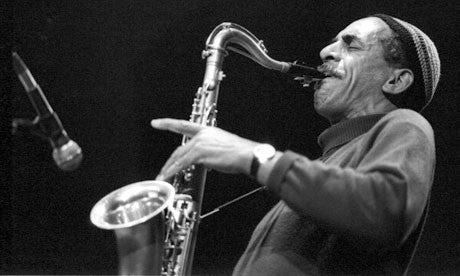\n\nThe Afro-Danish reedsman **John Tchicai** was one of the unique talents on the international out-jazz scene after the \"October Revolution\" of 1964. Born in Copenhagen (and of Congolese descent), he played violin as a child and switched to reeds as a teenager. He was pro by the late '50s traveling around Europe before setting off for NYC in '62. He hooked up with groups of major statement, such as New York Contemporary Five (with Don Cherry and Archie Shepp) and the New York Art Quartet. He participated in the behemoth free jazz recordings _New York Eye & Ear Control_ (with Albert Ayler) and John Coltrane's controversial _Ascension_.\n\nHe went back to Europe in '66 and started up his Cadentia Nova Danica orchestra and worked with the likes of Musica Elettronica Viva, ICP Orchestra, Iréne Schweizer, Pierre Dorge, John Lennon & Yoko Ono. He also wrote for chamber ensembles, worked with rock and Afro musicians and toured all over the globe including Africa and India, and recorded with Garrison Fewell, Henry Kaiser & Wadada Leo Smith, Cecil Taylor and others.\n\nHe is known mostly as an alto saxophonist but started to play a lot more tenor starting in the early '80s. He also played violin, clarinet and keyboards. Check out his version of Fela Kuti's \"Colo-Mentality\" on his _Put Up The Fight_ album and his amazing performance on Johnny Dyani's _Witchdoctor's Son_ album.",
"filePath": "content/posts/john-tchicai-april-28-1936-oct-8-2012.md",
"digest": "1775514abe10717e",
"rendered": {
"html": "<p><img src=\"/images/John-Tchicai_large.jpg\" alt=\"\"></p>\n<p>The Afro-Danish reedsman <strong>John Tchicai</strong> was one of the unique talents on the international out-jazz scene after the “October Revolution” of 1964. Born in Copenhagen (and of Congolese descent), he played violin as a child and switched to reeds as a teenager. He was pro by the late ’50s traveling around Europe before setting off for NYC in ‘62. He hooked up with groups of major statement, such as New York Contemporary Five (with Don Cherry and Archie Shepp) and the New York Art Quartet. He participated in the behemoth free jazz recordings <em>New York Eye & Ear Control</em> (with Albert Ayler) and John Coltrane’s controversial <em>Ascension</em>.</p>\n<p>He went back to Europe in ‘66 and started up his Cadentia Nova Danica orchestra and worked with the likes of Musica Elettronica Viva, ICP Orchestra, Iréne Schweizer, Pierre Dorge, John Lennon & Yoko Ono. He also wrote for chamber ensembles, worked with rock and Afro musicians and toured all over the globe including Africa and India, and recorded with Garrison Fewell, Henry Kaiser & Wadada Leo Smith, Cecil Taylor and others.</p>\n<p>He is known mostly as an alto saxophonist but started to play a lot more tenor starting in the early ’80s. He also played violin, clarinet and keyboards. Check out his version of Fela Kuti’s “Colo-Mentality” on his <em>Put Up The Fight</em> album and his amazing performance on Johnny Dyani’s <em>Witchdoctor’s Son</em> album.</p>",
"metadata": {
"headings": [],
"localImagePaths": [],
"remoteImagePaths": [],
"frontmatter": {
"web-scraper-order": "1746561590-261",
"web-scraper-start-url": "https://peaceandrhythm.com",
"title": "John Tchicai / April 28, 1936 - Oct 8, 2012",
"pagination": "https://www.peaceandrhythm.com/?page=60",
"date": "April 28, 2017",
"post": "John Tchicai / April 28, 1936 - Oct 8, 2012",
"post-href": "https://www.peaceandrhythm.com/blogs/news/john-tchicai-april-28-1936-oct-8-2012",
"slug": "john-tchicai-april-28-1936-oct-8-2012"
},
"imagePaths": []
}
},
"collection": "blog"
},
{
"id": "jimmy-giuffre-april-26-1921-april-24-2008",
"data": {
"title": "Jimmy Giuffre / April 26, 1921 - April 24, 2008",
"slug": "jimmy-giuffre-april-26-1921-april-24-2008",
"date": "2017-04-26T00:00:00.000Z"
},
"body": "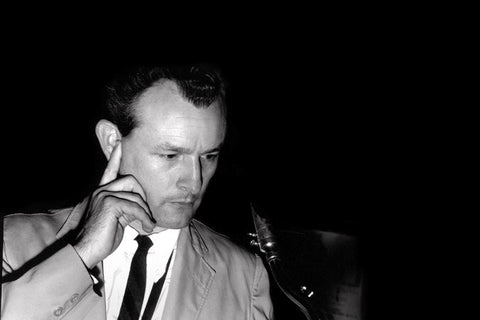\n\nThe reedsman (especially clarinet) **Jimmy Giuffre** was an innovator in experimental jazz, namely \"third stream\" (or \"chamber jazz\") and free improv. He moved from his native Texas to the West Coast around '50, becoming a major part of the scene and the development of \"cool jazz\". He played tenor & baritone with Howard Rumsey's Lighthouse All Stars until '53 and played for a minute in the band of ex-Lighthouser Shorty Rogers before going out on his own with his avant-garde music.\n\nHis drummerless trios consisted of reeds/bass/guitar, reeds/trombone/guitar and clarinet/piano/bass formats, in the process exploring free improvisation much earlier than most of the free jazz screamers. By the '70s he started working with drummers and electronics before taking cushy teaching gigs in the Northeast.\n\nHe's worked with Woody Herman (Giuffre composed \"Four Brothers\"), Lee Lonitz, Steve Swallow, Red Norvo, Bob Brookmeyer, Jim Hall, Shelly Manne, Paul Bley, André Jaume, Chet Baker, Modern Jazz Quartet, Sonny Stitt, Buddy Rich and my old friend Joe McPhee. Giuffre spent his last years in Western Massachusetts.",
"filePath": "content/posts/jimmy-giuffre-april-26-1921-april-24-2008.md",
"digest": "017f836f650728d0",
"rendered": {
"html": "<p><img src=\"/images/08GIUFFRE-master675_large.jpg\" alt=\"\"></p>\n<p>The reedsman (especially clarinet) <strong>Jimmy Giuffre</strong> was an innovator in experimental jazz, namely “third stream” (or “chamber jazz”) and free improv. He moved from his native Texas to the West Coast around ‘50, becoming a major part of the scene and the development of “cool jazz”. He played tenor & baritone with Howard Rumsey’s Lighthouse All Stars until ‘53 and played for a minute in the band of ex-Lighthouser Shorty Rogers before going out on his own with his avant-garde music.</p>\n<p>His drummerless trios consisted of reeds/bass/guitar, reeds/trombone/guitar and clarinet/piano/bass formats, in the process exploring free improvisation much earlier than most of the free jazz screamers. By the ’70s he started working with drummers and electronics before taking cushy teaching gigs in the Northeast.</p>\n<p>He’s worked with Woody Herman (Giuffre composed “Four Brothers”), Lee Lonitz, Steve Swallow, Red Norvo, Bob Brookmeyer, Jim Hall, Shelly Manne, Paul Bley, André Jaume, Chet Baker, Modern Jazz Quartet, Sonny Stitt, Buddy Rich and my old friend Joe McPhee. Giuffre spent his last years in Western Massachusetts.</p>",
"metadata": {
"headings": [],
"localImagePaths": [],
"remoteImagePaths": [],
"frontmatter": {
"web-scraper-order": "1746561585-259",
"web-scraper-start-url": "https://peaceandrhythm.com",
"title": "Jimmy Giuffre / April 26, 1921 - April 24, 2008",
"pagination": "https://www.peaceandrhythm.com/?page=60",
"date": "April 26, 2017",
"post": "Jimmy Giuffre / April 26, 1921 - April 24, 2008",
"post-href": "https://www.peaceandrhythm.com/blogs/news/jimmy-giuffre-april-26-1921-april-24-2008",
"slug": "jimmy-giuffre-april-26-1921-april-24-2008"
},
"imagePaths": []
}
},
"collection": "blog"
},
{
"id": "ma-rainey-april-26-1886ish-dec-22-1939",
"data": {
"title": "Ma Rainey / April 26, 1886ish - Dec 22, 1939",
"slug": "ma-rainey-april-26-1886ish-dec-22-1939",
"date": "2017-04-26T00:00:00.000Z"
},
"body": "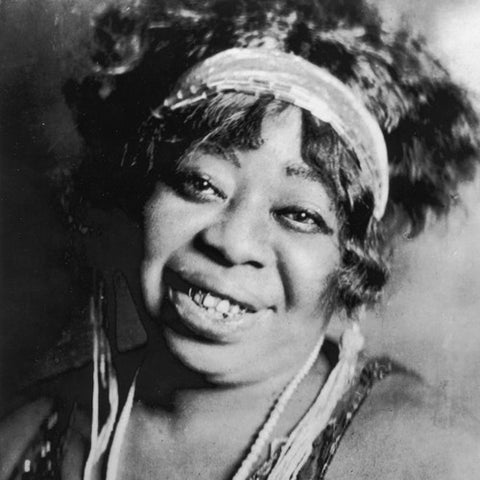\n\nThe Mother of the Blues, Gertrude Pridgett aka **Ma Rainey** , was an early singing star for that newfangled phonograph record player invention, as well as traveling and performing since the age of 12. She came from Georgia and heard the blues around 1902. She and her husband Will Rainey started groups called Alabama Fun Makers Company and then Assassinators of the Blues(!) and hit the road, also joining minstrel & medicine shows.\n\nShe found herself in New Orleans in 1914 and started hanging with King Oliver, Louie Armstrong and Sidney Bechet. With her powerfully expressive vocals she cut her first disks in 1923 and became well-known, recording over 100 sides in just about six years, making enough money to buy her own tour bus.\n\nHer soon-to-be classic tunes included \"CC Rider\", \"Bo-Weevil Blues\" and \"Ma Rainey's Black Bottom\". She recorded with Armstrong in '24 before touring with gospel/blues pianist Thomas A. Dorsey (aka Georgia Tom) for four years. She also recorded and/or appeared with Tampa Red, Blind Blake, Fletcher Henderson, Coleman Hawkins and others. She retired in '35.\n\nOpenly bisexual, she was a lover of Bessie Smith and was arrested in 1925 for hosting a lesbian orgy.___\"Went out last night with a crowd of my friends. They must've been women, cause I don't like no men...It's true I wear a collar and a tie... Talk to the gals just like any old man.\"_ \\--\"Prove It On Me Blues\", 1928.",
"filePath": "content/posts/ma-rainey-april-26-1886ish-dec-22-1939.md",
"digest": "43084f66711ed09e",
"rendered": {
"html": "<p><img src=\"/images/ma_rainey_large.jpg\" alt=\"\"></p>\n<p>The Mother of the Blues, Gertrude Pridgett aka <strong>Ma Rainey</strong> , was an early singing star for that newfangled phonograph record player invention, as well as traveling and performing since the age of 12. She came from Georgia and heard the blues around 1902. She and her husband Will Rainey started groups called Alabama Fun Makers Company and then Assassinators of the Blues(!) and hit the road, also joining minstrel & medicine shows.</p>\n<p>She found herself in New Orleans in 1914 and started hanging with King Oliver, Louie Armstrong and Sidney Bechet. With her powerfully expressive vocals she cut her first disks in 1923 and became well-known, recording over 100 sides in just about six years, making enough money to buy her own tour bus.</p>\n<p>Her soon-to-be classic tunes included “CC Rider”, “Bo-Weevil Blues” and “Ma Rainey’s Black Bottom”. She recorded with Armstrong in ‘24 before touring with gospel/blues pianist Thomas A. Dorsey (aka Georgia Tom) for four years. She also recorded and/or appeared with Tampa Red, Blind Blake, Fletcher Henderson, Coleman Hawkins and others. She retired in ‘35.</p>\n<p>Openly bisexual, she was a lover of Bessie Smith and was arrested in 1925 for hosting a lesbian orgy.__<em>“Went out last night with a crowd of my friends. They must’ve been women, cause I don’t like no men…It’s true I wear a collar and a tie… Talk to the gals just like any old man.”</em> —“Prove It On Me Blues”, 1928.</p>",
"metadata": {
"headings": [],
"localImagePaths": [],
"remoteImagePaths": [],
"frontmatter": {
"web-scraper-order": "1746561588-260",
"web-scraper-start-url": "https://peaceandrhythm.com",
"title": "Ma Rainey / April 26, 1886ish - Dec 22, 1939",
"pagination": "https://www.peaceandrhythm.com/?page=60",
"date": "April 26, 2017",
"post": "Ma Rainey / April 26, 1886ish - Dec 22, 1939",
"post-href": "https://www.peaceandrhythm.com/blogs/news/ma-rainey-april-26-1886ish-dec-22-1939",
"slug": "ma-rainey-april-26-1886ish-dec-22-1939"
},
"imagePaths": []
}
},
"collection": "blog"
}
]
Hasaan Ibn Ali / May 6, 1931 - 1980
May 6, 2017
"The Legendary Hasaan " Ibn Ali may be an obscure name in jazz but his notoriety in his local Philadelphia scene is not lost on the musicians of the time and place, not the least of which would be the Philly-reared saxophonists John Coltrane and Odean Pope, as well as...
Delia Derbyshire / May 5, 1937 - July 3, 2001
May 5, 2017
The English electronic music composer Delia Derbyshire may be best known for her eerie Doctor Who theme song but she held a creative chair at the BBC Radiophonic Workshop for over ten years, contributing to hundreds of productions. From Coventry, she played piano and violin as a child and expressed...
Bruce Haack / May 4, 1931 - Sept 26, 1988
May 4, 2017
The Canadian electronic music pioneer and instrument-builder/inventor Bruce Haack has a birthday today. An inspired creative person, the man participated in a wide array of projects. Early on he played jazz & Ukrainian folk music, participated in authentic pow-wows, hosted a radio show and got into tape & electro-acoustic music...
Guy Warren aka Kofi Ghanaba / May 4, 1923 - Dec 22, 2008
May 4, 2017
** Kofi Ghanaba , aka Guy Warren, was the first musician from the African continent to become known with a career and recordings in the USA, fusing American jazz with African folk forms. He was also a teacher, writer, historian and pan-Africanist of renown. A Ghanaian by birth, during WW2...
Sharon Jones / May 4, 1956 - Nov 18, 2016
May 4, 2017
One of my favorites in recent years, the wonderful Sharon Jones captivated growing legions of audiences in the new millennium with her high-energy, charming personality and powerful voice on stages around the globe. A former security guard who made the big time, despite being told she was "too short, too...
James Brown / May 3, 1933 - Dec 25, 2006
May 3, 2017
Happy birthday to the Godfather of Soul, the Minister of the New New Superheavy Funk, Soul Brother #1, the hardest working man in show business, Mr Dynamite...James Brown!
Eugenio "Totico" Arango / June 2, 1934 - Jan 21, 2011
May 2, 2017
One of the rumberos who helped the tradition thrive in NYC, Totico is best known for teaming with Carlos "Patato" Valdes. Born in Havana, he arrived in Boston in '59 and moved to NYC shortly after. He quickly found work as a percussionist, playing with Max Roach, Abbey Lincoln &...
Lesley Gore / May 2, 1946 - Feb 16, 2015
May 2, 2017
The original Riot Grrl, long before such a phenomenon, Lesley Gore's big hits, "It's My Party", "Judy's Turn To Cry", "That's The Way Boys Are" and the feminist statement "You Don't Own Me", were all produced by Quincy Jones and released while Lesley was still in high school. She was...
Link Wray / May 2, 1929 - Nov 5, 2005
May 2, 2017
The great Shawnee rocker Link Wray invented the power chord and helped set off the hard rock revolution, influencing punk, thrash & heavy metal with his 1958 hit "Rumble" spawning the future headbanger generation. He made his first record in '55, before heading to Korea with the Army. He got...
Little Walter / May 1, 1930 - Feb 15, 1968
May 1, 2017
Blues harp icon Little Walter Jacobs influenced nearly every single blues and rock harmonica player that came after him, Junior Wells included. He was hugely popular in the '50s with his loose & jazzy updates of old blues tunes, as well as original compositions hitting the charts and attaining worldwide...
Marva Whitney / May 1, 1944 - Dec 22, 2012
May 1, 2017
Forever associated with James Brown as one of his funky divas, Marva Whitney is fondly remembered for her raw vocal attack on some of the funkiest records ever made. From Kansas City, she came up in a gospel-singing family, performing as early as 1947 when she was three years old....
Duke Ellington / April 29, 1899 - May 24, 1974
April 29, 2017
Happy birthday to the greatest American composer, Duke Ellington!
Hasil Adkins / April 29, 1937 - April 26, 2005
April 29, 2017
On this day of birth for many great musicians, I have to give a nod to a personal favorite of mine, the outsider rockabilly/country wildman Hasil Adkins. A one-redneck band who could play percussion and guitar at the same time, this guy whooped it up like a punk rocker before...
Maya Deren / April 29, 1917 - Oct 13, 1961
April 29, 2017
** Maya Deren was the mother of American avant-garde cinema. Her films were surreal and intense, full of symbolism and incredibly strange ideas. Check out The Very Eye of Night , Meshes of the Afternoon and At Land. She was a Ukrainian Jew who fled to the US with her...
Ray Barretto / April 29, 1929 - Feb 17, 2006
April 29, 2017
The great Nuyorican percussionist, bandleader and composer Ray Barretto (Mr Hard Hands) retains a huge legacy, greatly influencing many percussionists and Latino jazz artists, and standing as a towering figure in the landscape of salsa music. He was checking out the bebop scene in the late '40s and honing his...
Style Scott / April 29, 1956 - Oct 9, 2014
April 29, 2017
Happy born day shout-out to Lincoln "Style" Scott , the great Jamaican drummer with Dub Syndicate, the Roots Radics (who became the Channel One house band around '79) and about a million Adrian Sherwood/On-U Sound projects. His earliest record appearances were with Sugar Minott ("Hard Time Pressure") and David Isaacs....
Tammi Terrell / April 29, 1945 - March 16, 1970
April 29, 2017
Singer and songwriter Tammi Terrell's star burned bright in her short career, one marked by abuse and tragedy yet she remains a popular artist 45 years after her death. From Philadelphia, two things happened that would positively and negatively affect her life: she was found to have immense talent and...
John Tchicai / April 28, 1936 - Oct 8, 2012
April 28, 2017
The Afro-Danish reedsman John Tchicai was one of the unique talents on the international out-jazz scene after the "October Revolution" of 1964. Born in Copenhagen (and of Congolese descent), he played violin as a child and switched to reeds as a teenager. He was pro by the late '50s traveling...
Jimmy Giuffre / April 26, 1921 - April 24, 2008
April 26, 2017
The reedsman (especially clarinet) Jimmy Giuffre was an innovator in experimental jazz, namely "third stream" (or "chamber jazz") and free improv. He moved from his native Texas to the West Coast around '50, becoming a major part of the scene and the development of "cool jazz". He played tenor &...
Ma Rainey / April 26, 1886ish - Dec 22, 1939
April 26, 2017
The Mother of the Blues, Gertrude Pridgett aka Ma Rainey , was an early singing star for that newfangled phonograph record player invention, as well as traveling and performing since the age of 12. She came from Georgia and heard the blues around 1902. She and her husband Will Rainey...
